Posted on February 8th, 2010 by Jaimie Schock
 edHelper offers free 2010 Winter Olympics-themed games, puzzles, booklets, activities and reading materials for students. This comprehensive web page features teaching aids in several different disciplines, including math, reading and writing, language development, critical thinking and more.
edHelper offers free 2010 Winter Olympics-themed games, puzzles, booklets, activities and reading materials for students. This comprehensive web page features teaching aids in several different disciplines, including math, reading and writing, language development, critical thinking and more.
Read More
Filed under: Web Resources | Comments Off on Winter Olympics Resources for Students
Tags: Class Activities, Curriculum, Grades K-5, Olympics, Resources for Teachers, Web Resources
Posted on February 8th, 2010 by Jaimie Schock
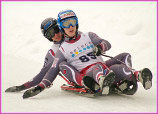 Students build a simulated luge track and make predictions about the impact of surface type, wind resistance, size of slope, and shape of luge on their track; test their predictions by conducting several simulated luge runs; and make conclusions about the effects of physical forces on the sport of luging.
Students build a simulated luge track and make predictions about the impact of surface type, wind resistance, size of slope, and shape of luge on their track; test their predictions by conducting several simulated luge runs; and make conclusions about the effects of physical forces on the sport of luging.
Read More
Filed under: Class Activities, Grades 6-8, Grades 6-8, Grades K-5, Grades K-5, Lesson Plans | 6 Comments »
Tags: Class Activities, Curriculum, Grades 3-8, Lesson Plan, Lesson Plans, Teacher Resources
Posted on February 8th, 2010 by Jaimie Schock
 The Canadian Olympic School Program has provided teachers with free classroom resources since 1988. Its website provides learning resources that help to engage students in the the Olympic Games. The resources include stories of Olympic athletes, project pacts for teachers, learning kits, videos, interactive materials for students, games and more.
The Canadian Olympic School Program has provided teachers with free classroom resources since 1988. Its website provides learning resources that help to engage students in the the Olympic Games. The resources include stories of Olympic athletes, project pacts for teachers, learning kits, videos, interactive materials for students, games and more.
Read More
Filed under: Web Resources | Comments Off on Olympic School
Tags: Curriculum, Olympics, Resources for Teachers, Web Resources
Posted on February 2nd, 2010 by Jaimie Schock
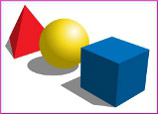 In this lesson plan, students learn how to find shapes in their world. With the help of the children’s book A Triangle for Adaora by Ifeoma Onyefulu, which shares the experience of a young Nigerian girl as she looks for a triangle around her, students learn the basic shapes, then go looking for them in magazines. They then present their findings to the class as shape researchers. This lesson also incorporates cultural learning.
In this lesson plan, students learn how to find shapes in their world. With the help of the children’s book A Triangle for Adaora by Ifeoma Onyefulu, which shares the experience of a young Nigerian girl as she looks for a triangle around her, students learn the basic shapes, then go looking for them in magazines. They then present their findings to the class as shape researchers. This lesson also incorporates cultural learning.
Read More
Filed under: Class Activities, Grades K-5, Grades K-5, Lesson Plans | Comments Off on Lesson: Shapes of Africa
Tags: Class Activities, Curriculum, Lesson Plans, Mathematics, Teacher Resources
Posted on February 1st, 2010 by Jaimie Schock
 A new report by the American Institutes for Research (AIR) examines mathematics standards used in grades 1-6 by Hong Kong, Singapore, and South Korea, which were chosen for international benchmarking because of their high performance on the Trends in International Mathematics and Science Study (TIMSS) assessments. The analysis finds a number of features that can be utilized for the development of K-6 mathematics standards in the United States.
A new report by the American Institutes for Research (AIR) examines mathematics standards used in grades 1-6 by Hong Kong, Singapore, and South Korea, which were chosen for international benchmarking because of their high performance on the Trends in International Mathematics and Science Study (TIMSS) assessments. The analysis finds a number of features that can be utilized for the development of K-6 mathematics standards in the United States.
Read More
Filed under: Web Resources | Comments Off on Study finds Math Standards Key to Performance
Tags: Curriculum, Grades K-5, Mathematics, Research, Research on Learning, Web Resources
Posted on January 25th, 2010 by ASEE
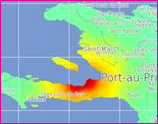
The Incorporated Research Institutes for Seismology (IRIS) offers resources for teachers wishing to help their students better understand why devastating earthquakes like the one that recently struck Haiti happen. The “Teachable moments” page features presentations (including an excellent power point slide show), animations, posters, images, video, general information, programs, resources in Spanish, news, and more.
Read More
Filed under: Web Resources | Comments Off on Web Resources: How Earthquakes Occur
Tags: Curriculum, Earth Science, Earthquake materials, Internet Resources, Seismology, Teacher Resources, Web Resources
Posted on January 25th, 2010 by Jaimie Schock
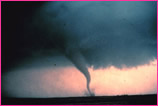 Students learn about various natural hazards and specific methods engineers use to prevent these hazards from becoming natural disasters. They study a hypothetical map of an area covered with natural hazards and decide where to place natural disaster prevention devices by applying their critical thinking skills and an understanding of the causes of natural disasters.
Students learn about various natural hazards and specific methods engineers use to prevent these hazards from becoming natural disasters. They study a hypothetical map of an area covered with natural hazards and decide where to place natural disaster prevention devices by applying their critical thinking skills and an understanding of the causes of natural disasters.
Read More
Filed under: Class Activities, Grades K-5, Grades K-5, Lesson Plans | 1 Comment »
Tags: Class Activities, Curriculum, Lesson Plans, Resources for Teachers, Teaching Aids
Posted on December 11th, 2009 by Jaimie Schock
 The Doing What Works (DWW) Website, sponsored by the U.S. Department of Education, translates research-based practices into practical tools to improve classroom instruction. The goal is to create an online library of resources to help teachers, schools, districts, states and technical assistance providers implement research-based instructional practice.
The Doing What Works (DWW) Website, sponsored by the U.S. Department of Education, translates research-based practices into practical tools to improve classroom instruction. The goal is to create an online library of resources to help teachers, schools, districts, states and technical assistance providers implement research-based instructional practice.
Read More
Filed under: Web Resources | Comments Off on Website: Doing What Works
Tags: Curriculum, Education Policy, Research on Learning, Teacher Training
Posted on December 4th, 2009 by ASEE
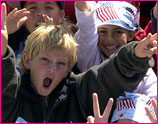 The Derby school district, near Wichita, Kansas, will lead the nation by being the first to offer the engineering classes at an elementary school.
The Derby school district, near Wichita, Kansas, will lead the nation by being the first to offer the engineering classes at an elementary school.
Read More
Filed under: K-12 Education News | 1 Comment »
Tags: Aerospace, Curriculum, Elementary Education, Project Lead the Way
 edHelper offers free 2010 Winter Olympics-themed games, puzzles, booklets, activities and reading materials for students. This comprehensive web page features teaching aids in several different disciplines, including math, reading and writing, language development, critical thinking and more.
edHelper offers free 2010 Winter Olympics-themed games, puzzles, booklets, activities and reading materials for students. This comprehensive web page features teaching aids in several different disciplines, including math, reading and writing, language development, critical thinking and more.








 Students build a simulated luge track and make predictions about the impact of surface type, wind resistance, size of slope, and shape of luge on their track; test their predictions by conducting several simulated luge runs; and make conclusions about the effects of physical forces on the sport of luging.
Students build a simulated luge track and make predictions about the impact of surface type, wind resistance, size of slope, and shape of luge on their track; test their predictions by conducting several simulated luge runs; and make conclusions about the effects of physical forces on the sport of luging. The
The  In this lesson plan, students learn how to find shapes in their world. With the help of the children’s book A Triangle for Adaora by Ifeoma Onyefulu, which shares the experience of a young Nigerian girl as she looks for a triangle around her, students learn the basic shapes, then go looking for them in magazines. They then present their findings to the class as shape researchers. This lesson also incorporates cultural learning.
In this lesson plan, students learn how to find shapes in their world. With the help of the children’s book A Triangle for Adaora by Ifeoma Onyefulu, which shares the experience of a young Nigerian girl as she looks for a triangle around her, students learn the basic shapes, then go looking for them in magazines. They then present their findings to the class as shape researchers. This lesson also incorporates cultural learning.

 Students learn about various natural hazards and specific methods engineers use to prevent these hazards from becoming natural disasters. They study a hypothetical map of an area covered with natural hazards and decide where to place natural disaster prevention devices by applying their critical thinking skills and an understanding of the causes of natural disasters.
Students learn about various natural hazards and specific methods engineers use to prevent these hazards from becoming natural disasters. They study a hypothetical map of an area covered with natural hazards and decide where to place natural disaster prevention devices by applying their critical thinking skills and an understanding of the causes of natural disasters. The Doing What Works (DWW) Website, sponsored by the U.S. Department of Education, translates research-based practices into practical tools to improve classroom instruction. The goal is to create an online library of resources to help teachers, schools, districts, states and technical assistance providers implement research-based instructional practice.
The Doing What Works (DWW) Website, sponsored by the U.S. Department of Education, translates research-based practices into practical tools to improve classroom instruction. The goal is to create an online library of resources to help teachers, schools, districts, states and technical assistance providers implement research-based instructional practice. The Derby school district, near Wichita, Kansas, will lead the nation by being the first to offer the engineering classes at an elementary school.
The Derby school district, near Wichita, Kansas, will lead the nation by being the first to offer the engineering classes at an elementary school.